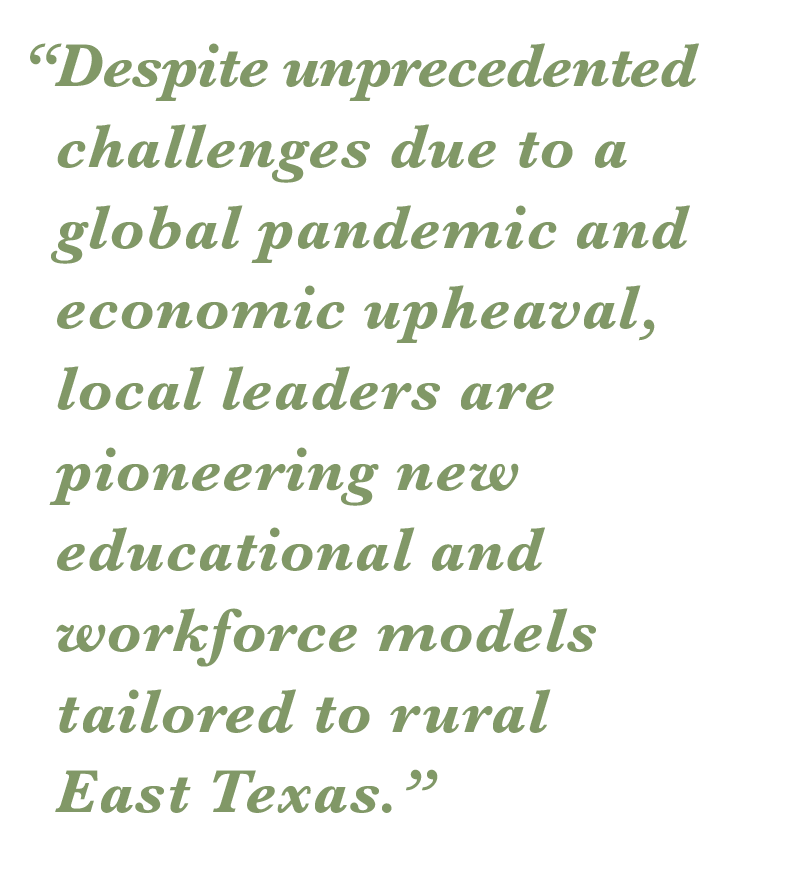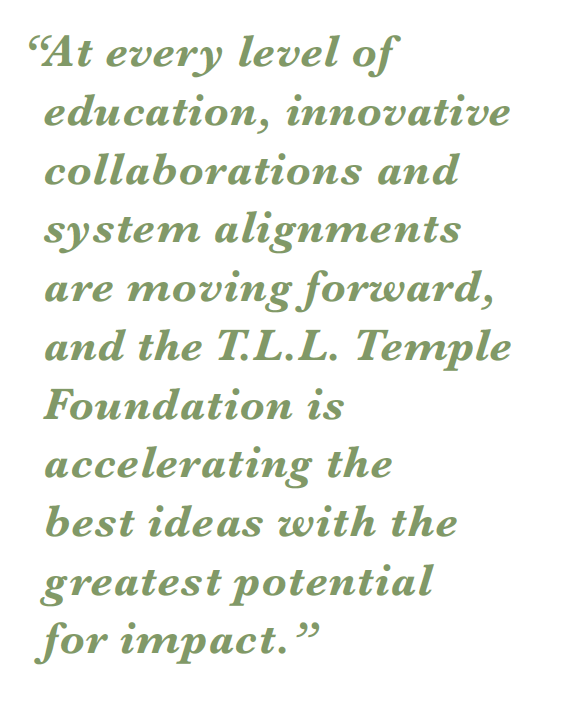EDUCATION
The T.L.L. Temple Foundation continues to accept proposals for education, economic opportunity, health, human services, and arts and culture. Our highest priorities in education are Early Literacy and Numeracy and Post-Secondary Success and Workforce Development.
To view our complete strategic plan, please click here.
EARLY LITERACY AND NUMERACY STRATEGY OVERVIEW
OBJECTIVE
All East Texas students have access to high quality Pre-K and early grade programs that enable them to meet or exceed third grade education standards in reading and mathematics.
CHALLENGE
Kindergarten-readiness predicts third grade school achievement, and third grade reading proficiency predicts future academic success. Children in East Texas are starting kindergarten behind, and once they reach school, they are not getting the instructional literacy and numeracy support they need to catch up. Compared to the entire state, the T.L.L. Temple Foundation’s East Texas service area is more rural and has a higher percentage of students in low-income households. Consistent with the expected impacts of high poverty rural contexts on children’s early development, East Texas students score lower than their peers across the state on standardized kindergarten-readiness and third grade reading and math scores. In 2019, approximately two-thirds of the school districts within the T.L.L. Temple Foundation’s rural service area lagged the low state average, which is only 45%, for third graders reading at grade level. The COVID-19 pandemic has strained an already inadequate rural early education and care system, further disrupting the lives and learning pathways of young children. These challenges are limiting opportunities for children and undercutting efforts to build a thriving East Texas.
OPPORTUNITY
Disadvantaged children receive the most benefit from high-quality early learning interventions, and society receives the highest rates of return by investing in children most in need.1 In those critical early years, the quality of a child’s early learning environment and stimulation propels them forward or holds them back. In East Texas, teachers, school leaders, researchers, and educator preparation programs are developing cutting-edge instructional methods and new models tailored to propel young rural students forward. East Texas school districts are expanding access to high-quality full day Pre-K. Innovative read-aloud literacy and numeracy programs that engage parents in their child’s learning and development are being piloted and evaluated for their impacts in rural communities. Teacher preparation programs are equipping pre-service teachers with rigorous, evidence-based competencies in early grade literacy and numeracy instruction. Education partners are adapting in-service teacher trainings to accelerate students’ acquisition of fundamental reading and math skills. From early education to third grade — in homes, classrooms, and campuses — the T.L.L. Temple Foundation is advancing high-impact programs to ensure every East Texan is on an early trajectory for academic and life success.
- Instructional Effectiveness: Strengthen the capacity of Pre-K and elementary schools to deliver high quality instruction that increases third grade early literacy and numeracy.
- Redesign teacher preparation programs to effectively teach evidence-based early literacy and numeracy.
- Train in-service teachers on evidence-based strategies to teach literacy and numeracy.
- Support training in evidenced-based early literacy and numeracy practices for school district and college leaders.
- Quality Programs: Increase student access to high quality full-day Pre-K and early grade programs with special attention to early literacy and numeracy.
- Expand high-quality full-day Pre-K in districts.
- Develop and scale high-quality full-day Pre-K and early grade models, emphasizing the science of teaching reading and numeracy.
- Explore and fund evidence-based literacy and numeracy models.
- Support quality programs that increase kindergarten readiness.
MONITORING PROGRESS
To ensure we are accelerating change and achieving results, the Foundation is monitoring 3rd grade reading and math proficiency rates, Kindergarten readiness, participation in quality Pre-K programs, and early literacy and numeracy proficiency scores:
- By geography: In school districts and early learning centers participating in project investments, in our service area, and in Texas
- By socio-economic status, race, gender, and special populations, such as English language learners.
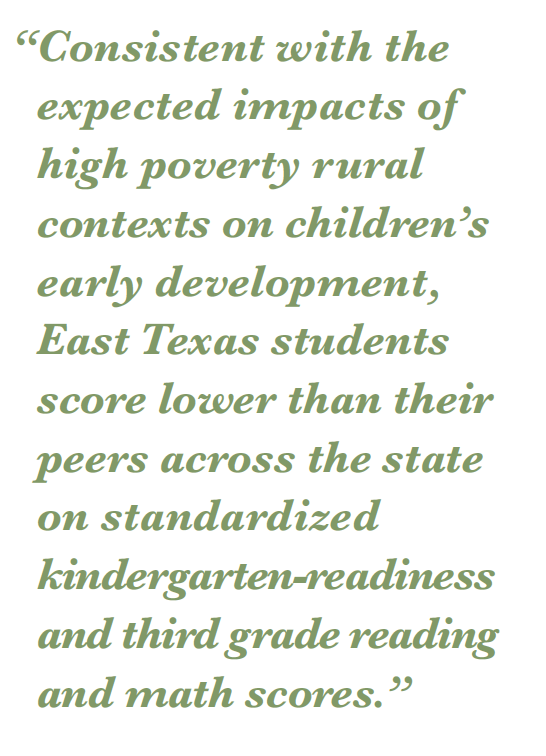
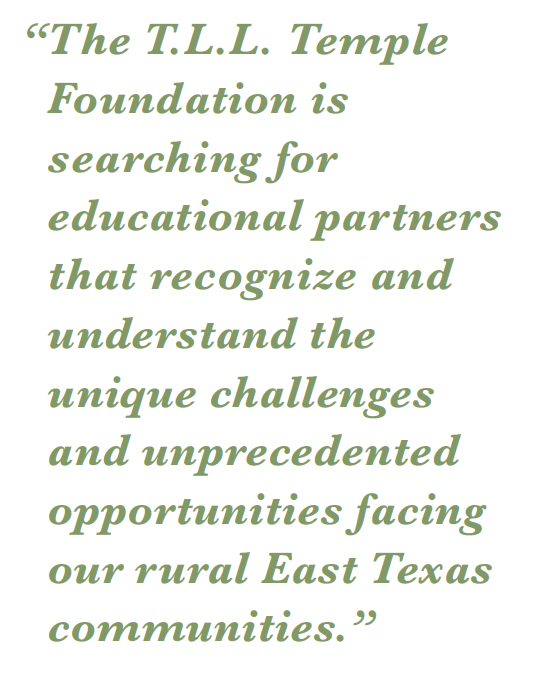
POST-SECONDARY SUCCESS AND WORKFORCE DEVELOPMENT STRATEGY OVERVIEW
OBJECTIVE
All 16-24-year-old rural East Texans earn a credential with labor market value that contributes to building a thriving East Texas.
CHALLENGE
Our educational systems in rural East Texas are not preparing students with the knowledge and skills they need for future workforce success. Increasingly, jobs require post-secondary credentials—something beyond high school.1 Technological advancements are leaving behind workers in occupations susceptible to automation, particularly those without access to transformative learning opportunities.2 According to a recent statewide analysis, less than 0.01 percent of students earned an industry-recognized credential while enrolled in Texas high schools.3 Only one out of five eighth graders in Texas go on to complete any degree or certificate within six years of high school graduation.4 And some of those credentials, like cosmetology, are not in demand and pay limited average wages.5 East Texas is further behind the curve for post-secondary educational attainment, lagging state and national credential achievement. Rapid demographic changes already underway will compound this problem, as those populations that are fastest growing are also the most underserved by our educational systems.6 Simply put, our region cannot thrive without improving education and workforce outcomes. Young people will not reach their full potential, families will suffer, and employers will continue to struggle with talent shortages.
OPPORTUNITY
A thriving rural East Texas requires an educational infrastructure that prepares each generation of East Texans for the high wage, high demand jobs of the future. Despite unprecedented challenges due to a global pandemic and economic upheaval, local leaders are pioneering new educational and workforce models tailored to rural East Texas. Small school districts are creating alliances to offer their students academic and career opportunities that would be impossible to provide in isolation. Community colleges are developing guided pathways that increase the number of young people who enter post-secondary education, complete credentials, and secure better jobs. Local industries are coming together to build up talent pipelines so that East Texas has a workforce that drives economic development. Across the board, there is a renewed focus on equity, so that every East Texan has the access and opportunity they need to thrive. At every level of education, innovative collaborations and system alignments are moving forward, and the T.L.L. Temple Foundation is accelerating the best ideas with the greatest potential for impact.
STRATEGY
The T.L.L. Temple Foundation is pursuing a targeted strategy for rural East Texas to increase the number of students who attain high-skill, high-demand credentials, align K-16 educational pathways, and strengthen linkages between education and key industry clusters to propel local economic development. The T.L.L. Temple Foundation activates transformative ,organizations and ideas that will build and elevate a thriving East Texas as a leader in rural education and economic opportunity. The T.L.L. Temple Foundation is seeking education and industry partners that recognize and understand the unique challenges and unprecedented opportunities facing our rural East Texas communities. Fundamental to the strategy are strong partnerships founded on a shared commitment to pursue transformational system-level impacts, incorporate equitable access to opportunity, strengthen collaboration and innovation across institutions and sectors, and pursue data-driven accountability for results.
- Student Success: Advance rural education models and programs that help students complete post-secondary degrees and credentials that lead to high demand, high wage careers.
- Ensure rural students, particularly historically underrepresented groups, are prepared for college and career success.
- Develop effective pathway models to help rural students, particularly historically underrepresented groups, gain degrees or credentials that lead to high demand, high wage jobs.
- Education System Redesign and Alignment: Strengthen and better align educational institutions to improve student outcomes.
- Strengthen and scale guided pathways to post-secondary success.
- Align K-16 math pathways for post-secondary success.
- Connect schools and/or districts to vetted technical assistance providers that help schools improve and address systemic barriers to equitable student outcomes.
MONITORING PROGRESS
To ensure that we are accelerating change and achieving results, the Foundation is monitoring the number and percent of credentials completed by grade 12 and in post-secondary education:
- By geography: In school districts and institutions of higher education participating in project investments, in our service area, and in Texas
- By socio-economic status, race, and gender
